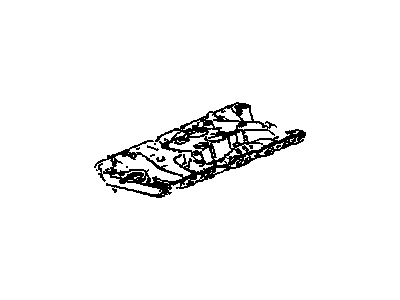
My Garage
My Account
Cart
Genuine Chevrolet El Camino Intake Manifold
Engine Intake Manifold- Select Vehicle by Model
- Select Vehicle by VIN
Select Vehicle by Model
orMake
Model
Year
Select Vehicle by VIN
For the most accurate results, select vehicle by your VIN (Vehicle Identification Number).
2 Intake Manifolds found
Chevrolet El Camino Manifold, Intake (Aluminum)
Part Number: 22542648$800.93 MSRP: $933.03You Save: $132.10 (15%)Ships in 1-2 Business Days
Chevrolet El Camino Intake Manifold
Each OEM Chevrolet El Camino Intake Manifold we offer is competitively priced and comes with the assurance of the manufacturer's warranty for the part. Furthermore, we guarantee the speedy delivery of your orders right to your doorstep. Our hassle-free return policy is also in place for your peace of mind.
Chevrolet El Camino Intake Manifold Parts Questions & Experts Answers
- Q: What steps should be followed when removing and replacing the intake manifold in V8 engine on Chevrolet El Camino?A:If the engine has been removed from the car, disregard the following steps which do not apply. For vehicles equipped with air conditioning, carefully examine the routing of the A/C hoses and the mounting of the compressor; you may be able to remove the intake manifold without disconnecting the A/C system, but if in doubt, consult a certified dealer or refrigeration specialist to have the system depressurized, and do not disconnect the A/C hoses while under pressure. Begin by disconnecting the negative battery cable, then drain the coolant from the radiator. Remove the air cleaner assembly, disconnect the upper radiator hose and the heater hose from the intake manifold, and disconnect the accelerator linkage at the carburetor, ensuring any supporting bracket is also removed. With a container handy to catch any spillage, disconnect the fuel inlet hose at the carburetor, plugging the end to prevent dirt entry and excessive fuel seepage. Disconnect all other hoses connected to the carburetor, identifying each hose with numbered tape to avoid confusion during reassembly. Remove the distributor, securing the distributor cap with spark plug wires against the firewall. If equipped with an external coil, disconnect and mark the wiring at the top of the coil. Disconnect the vacuum hose leading to the power brake booster if applicable, then remove the upper bracket for the alternator and the air conditioning compressor bracket at the intake manifold. Remove the intake manifold-to-cylinder head attaching bolts, counting them to ensure all have been removed, then lift the manifold, complete with carburetor, free from the engine without prying on the mating surfaces. If replacing the intake manifold, transfer applicable accessories such as the carburetor, temperature or oil pressure sending unit, water outlet and thermostat, heater hose and water pump hose adapter fittings, EGR valve, emission system TVS switches, carburetor choke assembly, and ignition coil and bracket. Before installing the manifold, place clean lint-free rags in the engine cavity and thoroughly clean the engine block, cylinder heads, and manifold gasket surfaces, removing all extra gasket material and sealing compound. Install new front and rear seals to the engine block using RTV or an equivalent sealant, extending the bead of sealant about ½-inch up the sides of each cylinder head to seal and retain the side gaskets. Place new manifold side gaskets into position on each cylinder head, using sealant around the water passages, ensuring proper mating with the front and rear seals. Lower the intake manifold into position carefully to avoid disturbing the gaskets, torque the attaching bolts to specifications in the correct order, and install the remaining components in reverse order of removal. Finally, fill the radiator with coolant, start the engine, check for leaks, and adjust the ignition timing and carburetor idle speed as necessary.



